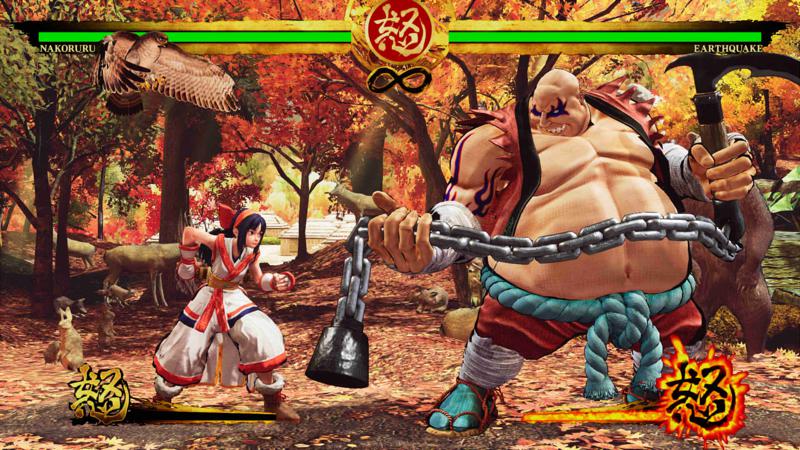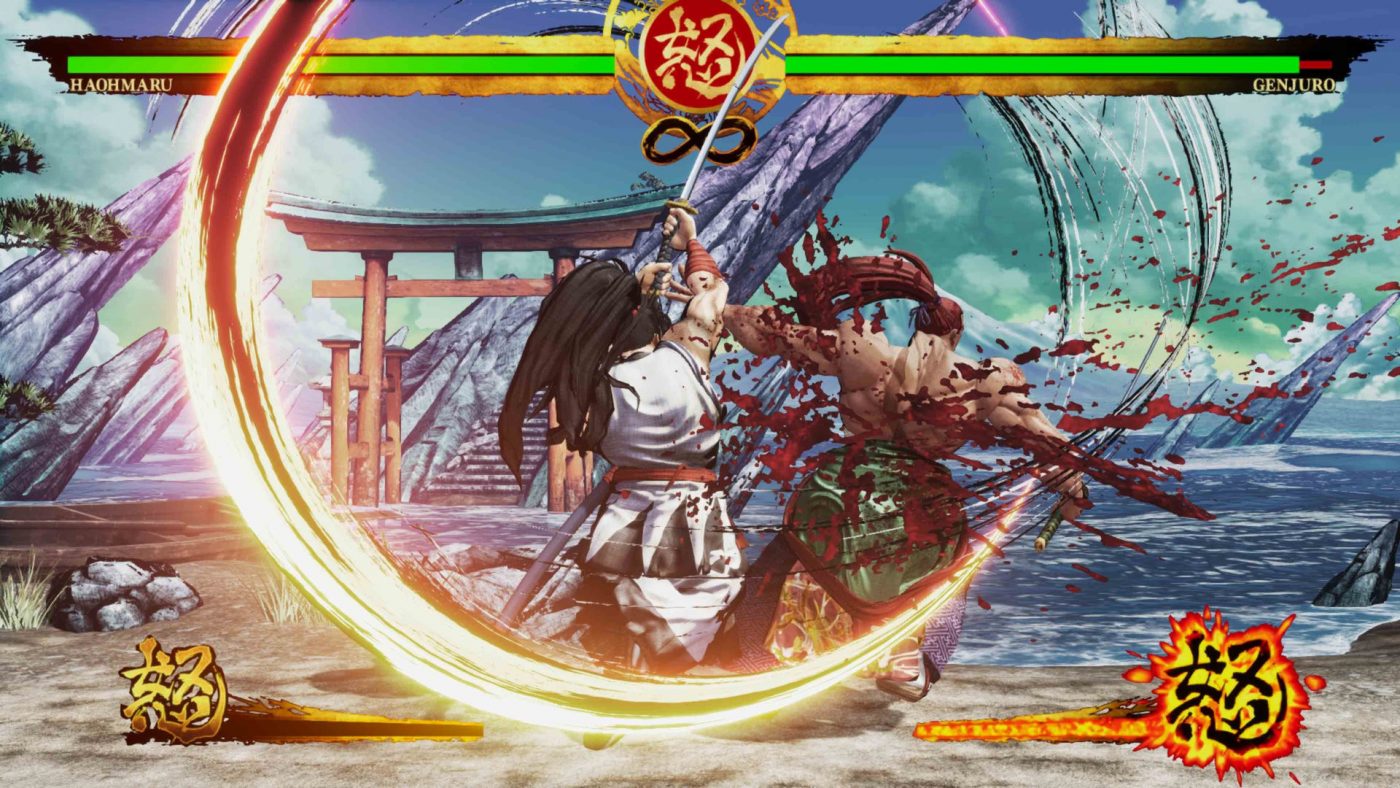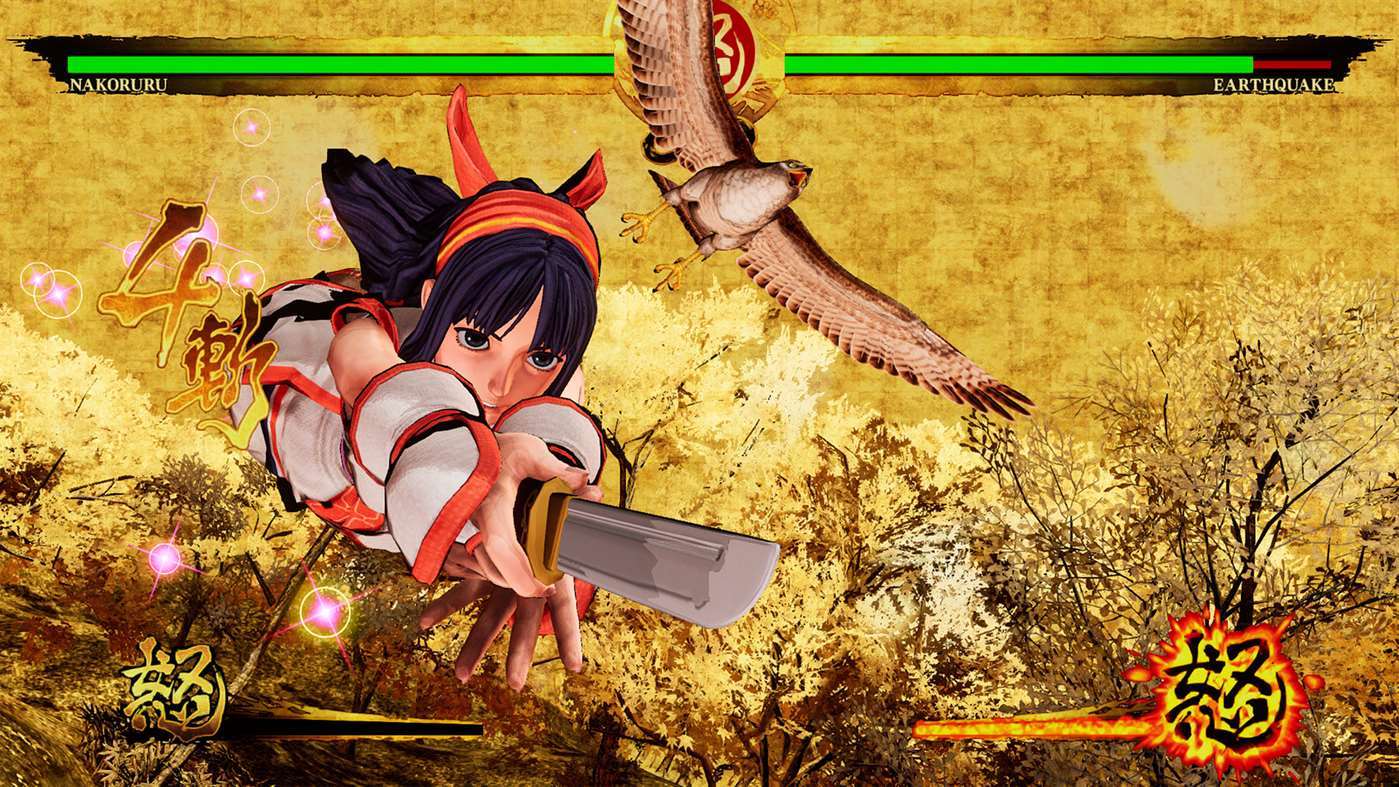About 17-18 years ago I owned a Neo Geo AES and, fortunately, managed to get Samurai Spirits 2 (changed to Samurai Shodown 2 in the West) for around twenty notes from a Japan-based friend.
This was at a time when my mates and I would go round each others’ houses, play games and drink of the malt beverages. Everyone agreed SamSho 2 was a cracker of a game, but no-one would play against me. Why? Because I completely rinsed them at it. Was this down to my advanced skills? My peerless reading of their intentions? Nah, it’s because the game was tough as nails, curious, and needed tons of time put into it before you got good. ‘Inaccessible’ would probably be as good a description as any. Without the game at home (and loads of practice) it definitely kept you at arm’s length.

I’ve not really bothered with the game series since. The later sequels seemed to be in the same vein as parts 1 & 2, i.e. mechanically interesting but quite arcane. Also, there were no mates to grind into paste. This reboot seeks to balance things out whilst keeping the essence of the game intact whilst adding online play, so you can turn your friends into bloody chunks via the information super highway.
SamSho reboot is a lovely looking thing, that makes an effort to express its individuality. Superficially it looks similar to Street Fighter 4, with a colourful cel-shaded look that captures that particular ink-wash painting style (called ‘Sumi-e’) we in the West associate with ancient Japan. The game’s set during the Tenmai era – late 18th century – and many of the stages place you against gorgeous oriental backdrops. Pagodas, temples, snow-tipped mountains and the gentle snowfall of Cherry blossom petals give the game a distinctive atmosphere.
The loveliness of the aesthetic is in deliberate contrast to the slicing, dicing, blood-soaked gameplay. Walk speed is comparatively slow, attacks come out hard and heavy (and are swiftly punished when whiffed) and special moves have long wind-ups.

Success depends on counters, evades, parries and guard breaks to a degree that most fighting games reserve for top-tier players, coercing you into learning three core defensive plays: an evade that sees you side-step into the scenery, a ‘Just Defend’ block that builds your Rage Meter, and a throw that staggers your opponent ready for a follow-up attack.
With most attacks kicking out a lot of chip damage and also causing knock-back, breaking the oppression with a subtle dodge or counter move is vital. Just Defend is where you tap block at the last second, nullifying chip damage and building your meter. Activating rage mode gives you greater damage output for certain attacks, and also allows you to use your super special. As you may have guessed by this point, the combat system’s pretty deep!
Getting comfortable with a character who suits your style is key to actually having fun amongst all the pressure and precision, so it’s good that there’s a wide range to pick from. Alongside returning favourites like Haohmaru, Genjuro and Hanzo there are three new characters in the base roster: Darli – a woman who fights with a huge saw-blade and hammer, Yashamaru – a tricksy katana-wielder who favours ranged attacks, and Wu-Ruixiang – a bespectacled young woman who uses a large compass as a shield.

I clicked pretty quickly with Yashamaru, but then katana users have always been the simplest to acclimatise to. Teasing-out nuances from the likes of Wu (who has some moves that remind me of Hsien-Ko from Darkstalkers) and Gungsong Li – who uses a parasol (!) – takes a bit more time, but is worth it. You might not want them as your main, but are always a laugh for mixing things up.
As an overall package, SamSho doesn’t overwhelm you with its feature set but what’s there is solid. There’s a decent selection of tutorials and training modes, the main Story mode and the online mode. Dipping into the murky and frightening world of competitive play, I was only able to get one game once I got the courage up to test my mettle. Unfortunately, it was a laggy experience so I can’t really comment on how the netcode holds up, but I’ll definitely be giving it another pop soon. I haven’t had abuse of my skills or questioning of my sexuality by 14 year olds for a long time, so why not?
The only major negative in the game are the incredibly slow loading speeds. Restarting a fight after defeat is swift, but moving on to the next battle can see load times of around a minute in length. This could be exacerbated by my Xbox One X’s creaky old hard drive, but hardware aside there’s no real excuse for this not to have been optimised.
This series has never been aimed at those needing a quick injection of edged-weapon combat and, even though this 2019 release stands as a tiny bit more entry-level than the Neo Geo releases, it’s still quirky as the day is long. If you want a more chess-like experience than the average fighting game, though, SamSho rewards patience and perseverance with sophisticated slasher thrills.

